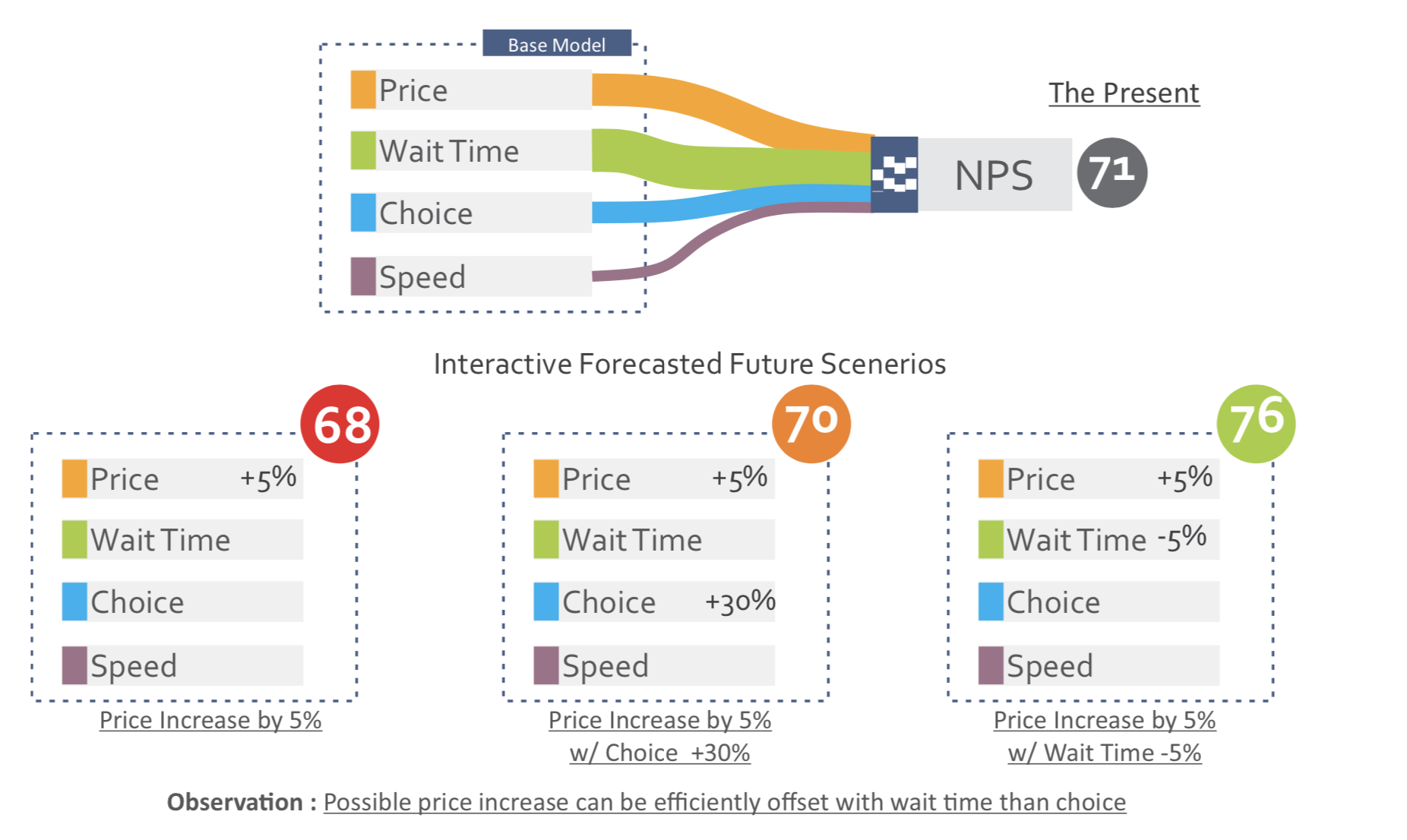Predictive Analytics
Building an accurate customer journey map and continually measuring the customer experience is not enough — in a fast-paced world, it’s equally as important to act on opportunities and potential issues as soon as possible. The best way to do so is to proactively analyze the key drivers of the customer experience. A well-designed customer journey map and steady feedback stream will provide many data points on potential changes that may improve the customers’ experience, but identifying which changes can influence long-term success is what really matters in the end.
Of course, people can build systems and identify patterns to predict the best actions, but the human brain is biased, however hard we try to deny it or overcome it. Since investments into the customer experience can be expensive and time consuming, it makes sense to invest in predictive analysis, to make better decisions, earlier on in the process.
Machine learning is also able to move predictive beyond simple regression analysis using structural path analysis. Because human experiences are interconnected, and loyalty is a result of multiple aspects of the experience, simple correlation isn’t always accurate enough. For example, in a bank, is teller friendliness more important than the speed of service? What about how accurate their help and advice is? Deciding which of these aspects to focus improvements on isn’t as simple as direct correlation analysis. True predictive platforms are able to determine the key drivers of customer engagement leading to more accurate ROI predictions.
Another advantage of outsourcing analysis to an algorithm is speed - while humans can take days and even weeks to work through an array of information, using a platform like Webex Experience Management means that the company can react to an upcoming change in a matter of hours or even minutes. This is critical in today’s connected world when a potential issue could go viral before your brand even starts to look into it. This also means that people who need access to data to make an educated decision do not have to wait while it goes through several loops of analysis, and can do their job quicker and more efficiently too. In the end, it all adds up to providing customers with the ultimate customer experience.
Predictive Insights with Path Analysis
Drug manufacturers spend billions of dollars annually going through careful research studies to ensure that introducing a new drug in a controlled environment leads to real improvements without placebo. These are important since the mistakes can bankrupt a pharmaceutical business.
Similarly, business users about to make a million dollar investment need dependable and robust insights to validate strategic decisions being made.
Strategic decisions happen every day, and may include
“Should we take this new product idea to the market?”
“Will customers like this massive redesign of our branches?”
“How will customers respond to changes in our pricing plans?”
“Should we enter new markets and geographies with new retail locations?”
“What if we reduce our branches to cut costs and replace them with video ATMs?”
and so on, all of which have significant time and cost implications when decisions go wrong.
Speed to insight is critical, and waiting for months for a report from a research agency can cripple a business in today’s world of fast changing market conditions.
Fortunately for Webex Experience Management users, since we already listen to your customers, and aggregate data from multiple systems for a 360 degree view, there’s no waiting involved.
Advanced analysis, much like those used by drug companies is possible by using our Path Analysis module. It enables establishing causation using structural equation modeling. This enables advanced experimentation and what-if scenario modeling, providing decision makers with a strategic decision making tool.
Path and Predictive Analysis offer a strongly data science-driven predictively analytical CEM program that can not only help understand the present, but interactively forecast the future.
Interactive forecasts can be made using the direct and indirect relationships that are found between any of the influences. These forward forecasts can be applied in the optimization process, maximizing desirable outcomes while minimizing others. This can be used to develop decision logic or rank a set of business modifications based on the impact of the outcomes, thereby enabling data-driven, knowledge-based decision making.

Effective application of predictive analytics can lead to more proactive business decisions making and improve predictability around business decisions impacting customer experience.
Besides being able to build models to predict customer satisfaction on measures such as NPS/CSAT, these interactive models can also forecast service quality, customer retention or traditional financial metrics such as average revenue per customer to establish financial linkages to CX ROI.
